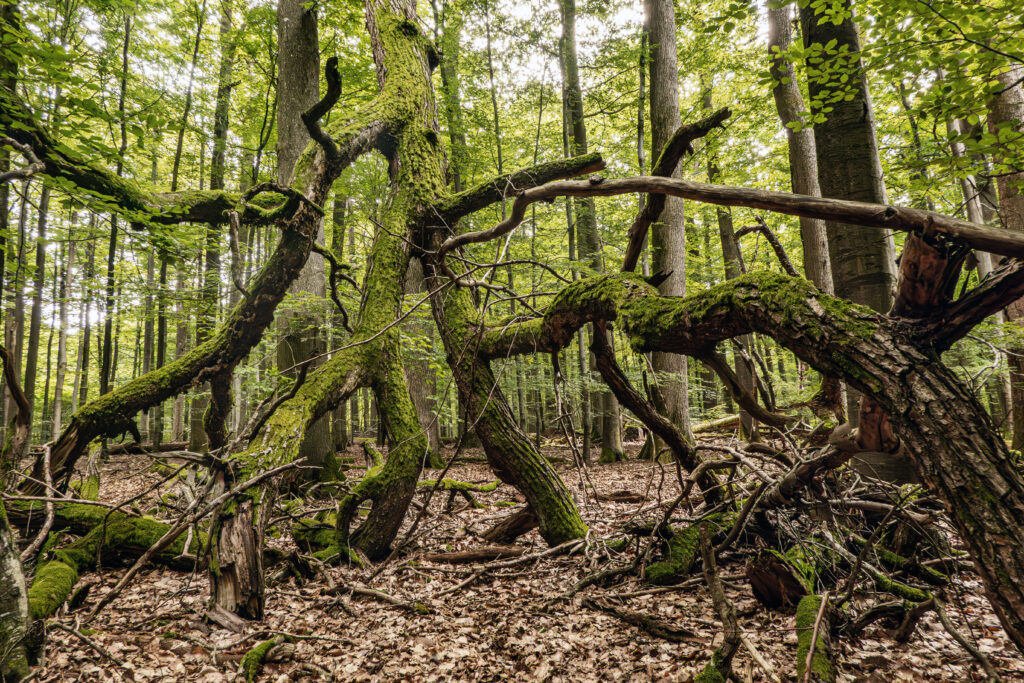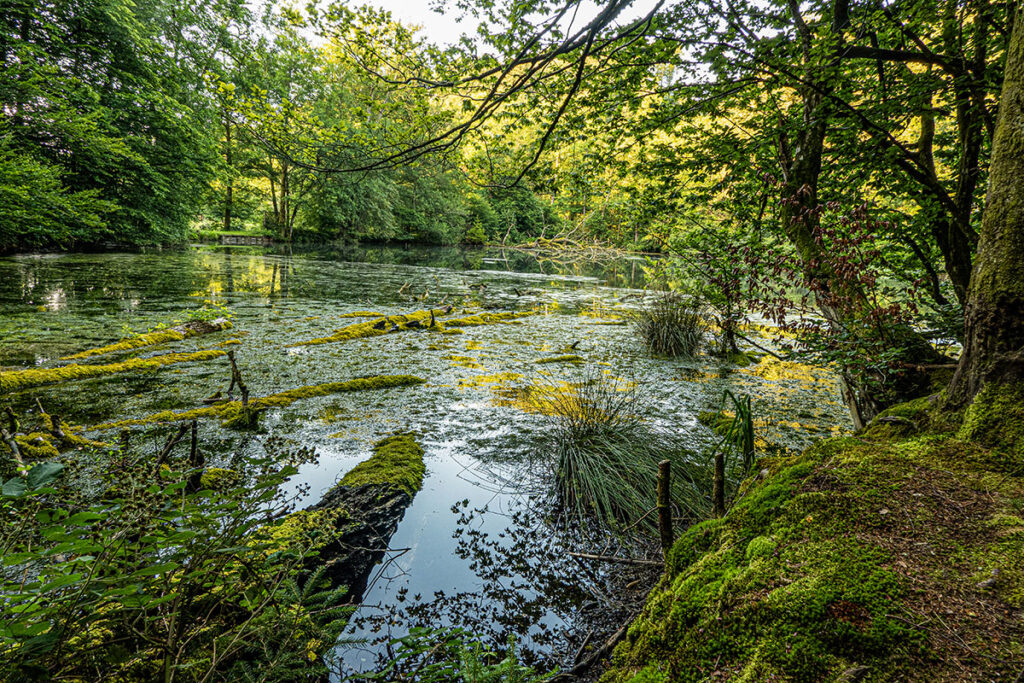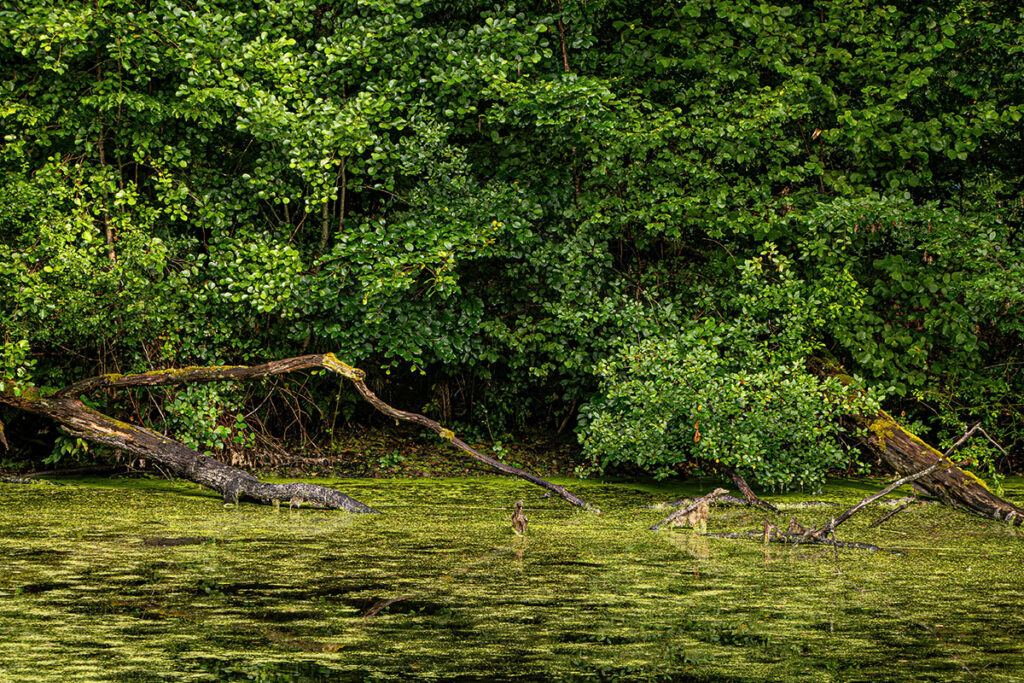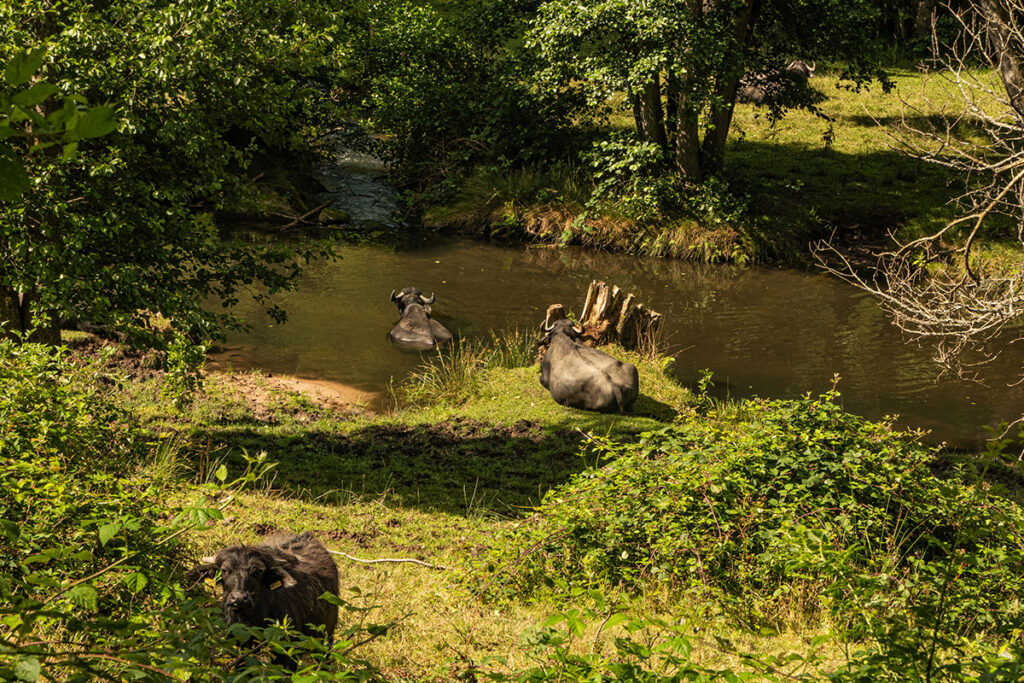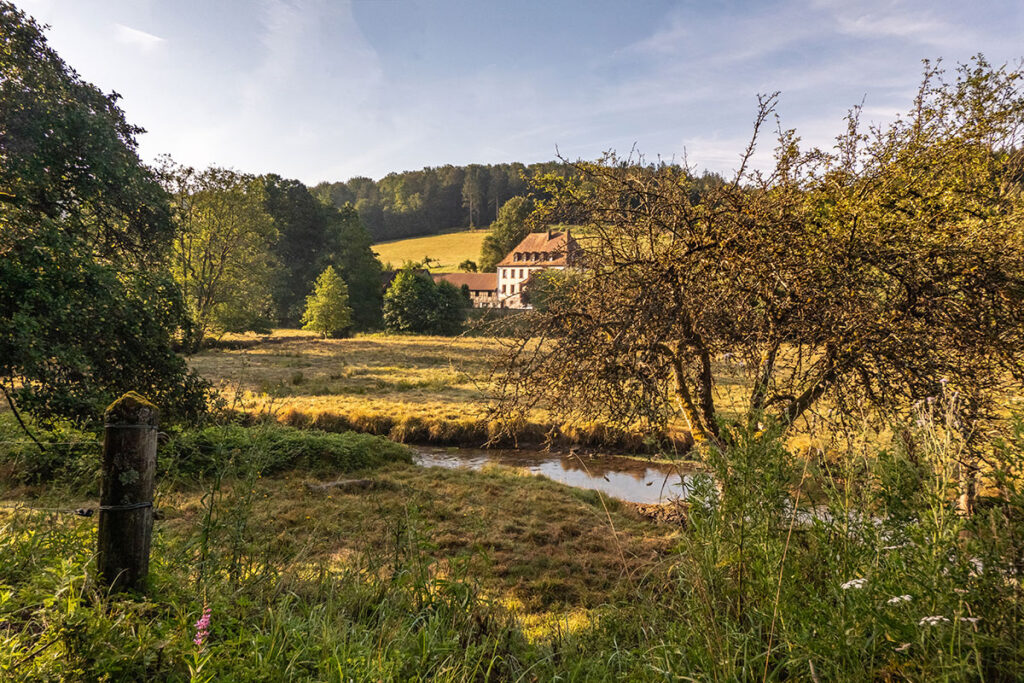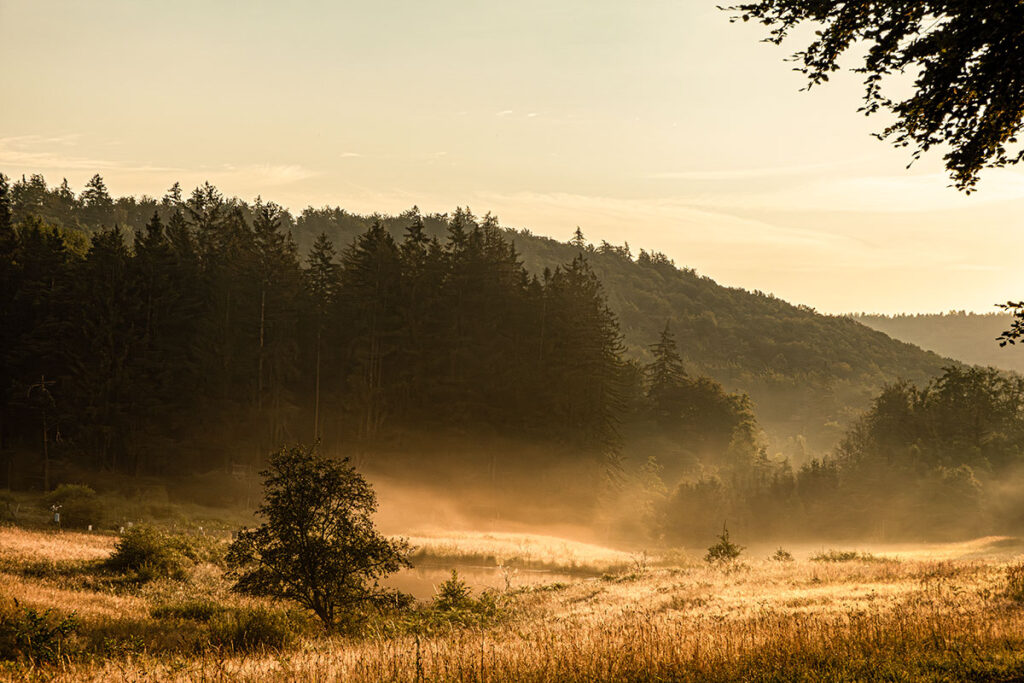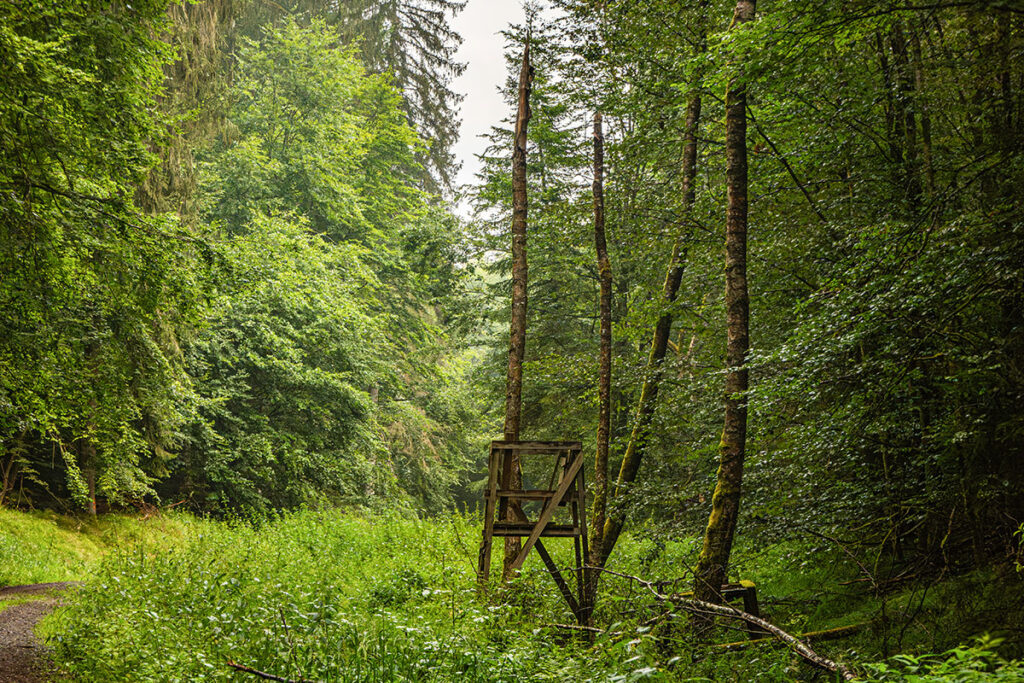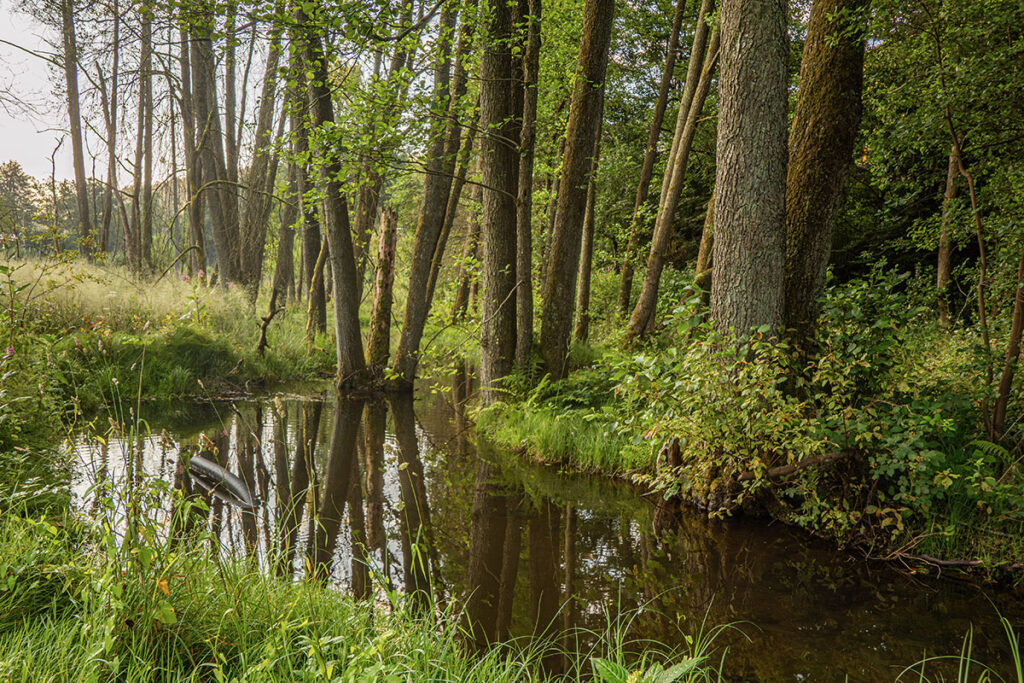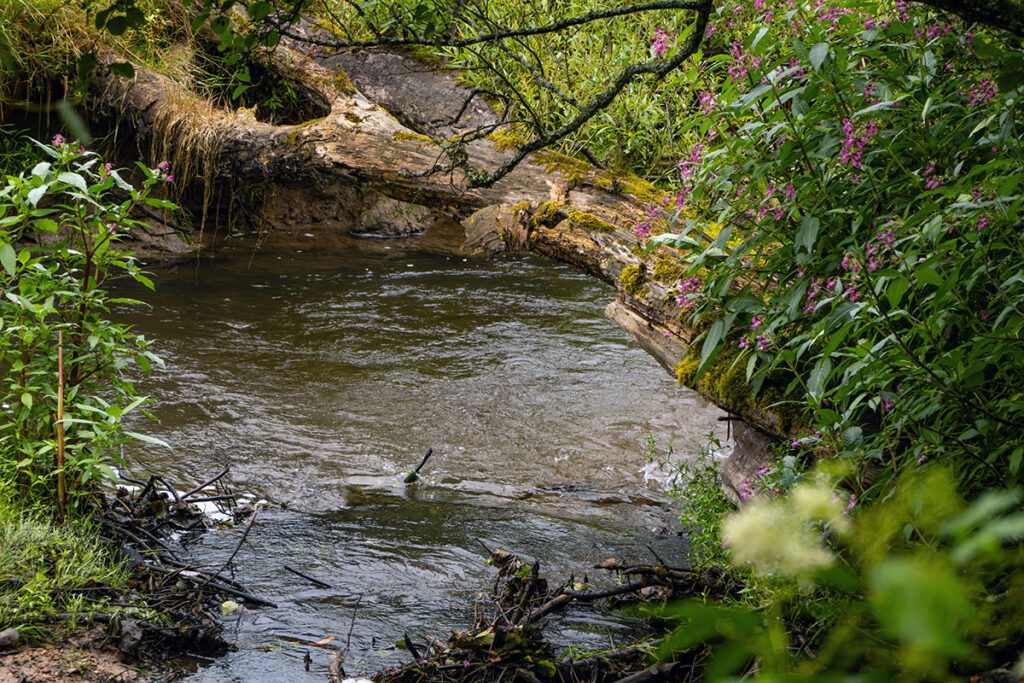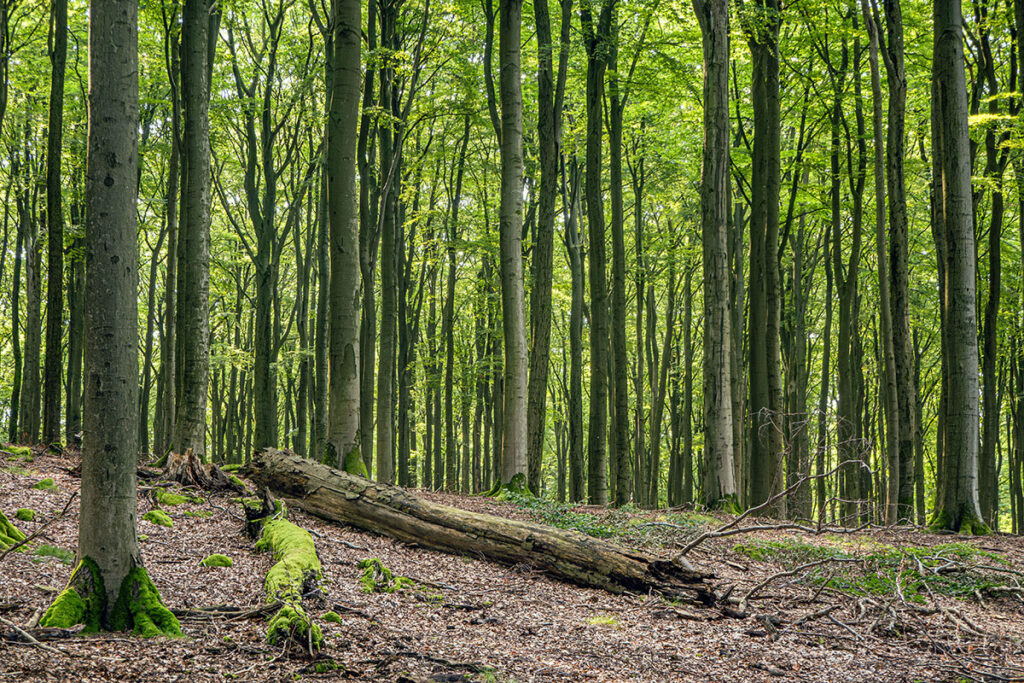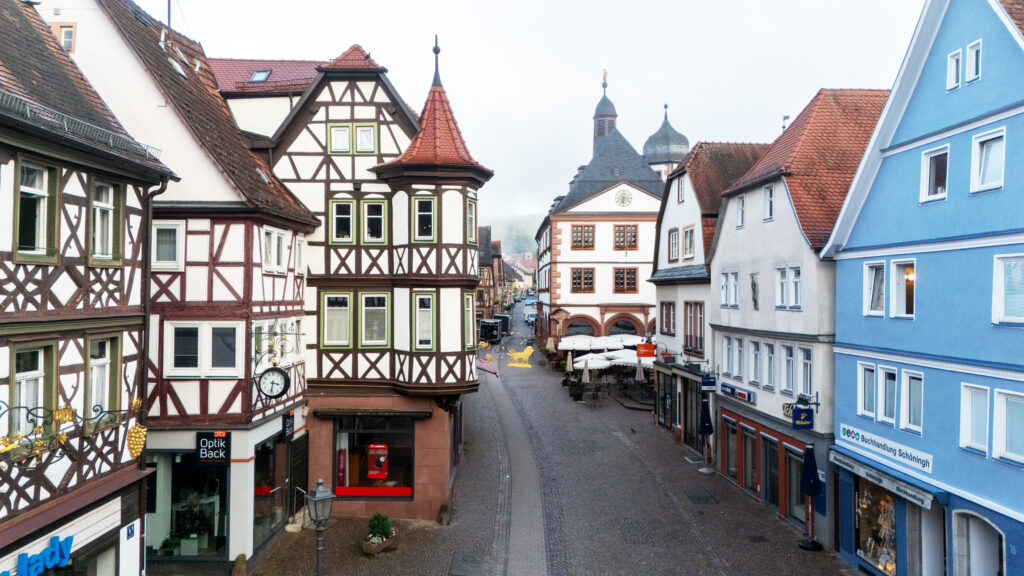Bavaria – Lower Franconia

09.07.2024 – Metzgergraben & Krone Nature Reserve
In the Steinbachtal valley, east of Weibersbrunn, there is a fascinating mixed forest of oak and beech trees. Bavaria’s first nature reserve was established here in 1928, covering an area of 7.6 hectares. Majestic oaks tower into the sky. The weathered deadwood structures, which are in various stages of decay, create a primeval forest-like atmosphere.
N49° 55.726′ E9° 23.805′
10.07.2024 – Oak forest Eichhall
The Eichhall natural forest reserve is a nature reserve with a stand of oak trees that are around 400 years old. It is located west of the Geiersberg in the Spessart and covers an area of around 72 hectares.
The rare collared flycatcher finds ideal breeding conditions in the old trees, which are interspersed with woodpecker cavities. These caves not only serve as a shelter for this species, but also for bats and a colony of swifts. In addition, 200 species of beetle living in dead wood have been recorded here, 80 of which are threatened with extinction, such as the hermit beetle.
N49° 54.796′ E9° 24.468′
10.07.2024 – Breitsee and Breitbachtal
The source of the Breitbach is the Breitsee Rothenbuch, which has been designated a natural monument. This lake, which is only around 0.3 hectares in size[1], was created in the 1930s for the timber drift. The Breitbach is a right tributary of the Hafenlohr.
N49° 57.110′ E9° 22.524′
13.07.2024 – Rohrberg
The Rohrberg is a former oak grove (“Eichen-Hüte-Wald”), where cattle from Rohrbrunn grazed for several centuries. The acorns were prized as fodder for cattle and game, which is why the oak was particularly encouraged here. The forest with its gnarled, centuries-old oaks was placed under protection in 1928, making it – together with the Metzgergraben-Krone nature reserve – the oldest nature reserve in Bavaria.
The Rohrberg nature reserve offers rare birds, beetles and fungi a habitat that can ensure their survival. These include the collared flycatcher, middle-spotted and grey-headed woodpecker, the only tree-breeding swift colony in Bavaria, the hermit beetle, stag beetle and hedgehog spinebill.
N49° 53.695′ E9° 25.490′
14.07.2024 – Hafenlohrtal at the Almichdamm
N49° 56.245′ E9° 24.240′
15.07.2024 – Dianateiche
N49° 56.328′ E9° 29.369′
16.07.2024 – Auenwald Erlenfurt
N49° 56.627′ E9° 28.517′
17.07.2024 – Hafenlohrtal, Water buffaloes and more
The nature reserve, idyllically situated above the hamlet of Lichtenau, extends over an almost 4 km long section of the 20 km long Hafenlohr valley. The reserve was designated in 1988 to protect the former litter and water meadows from afforestation with spruce trees and from over-intensive agricultural use. The landscape has changed in recent years: The meadows are once again in bloom and are used for haymaking, while sheep and goats graze the area naturally.
The diversity of species here is breathtaking: Within a very short space of time, 27 dragonfly species have already been recorded, including the fascinating damselfly and damselfly, as well as the delicate little blue dart. The area is also a true paradise for butterfly lovers: 41 species of butterflies live here, including many endangered species such as the marsh fritillary butterfly.
But not only the fauna, but also the flora is remarkable. The large population of wood lousewort is particularly noteworthy. Due to its size, impressive biodiversity and picturesque landscape, this area is not only of local but also national importance and attracts nature lovers from near and far.
N49° 55.255′ E9° 30.369′,
18.07.2024 – Hoher Knuck
The Hoher Knuck nature reserve is an old copper beech forest. The forest consists mainly of copper beech and sessile oak. Smaller areas are planted with younger Douglas firs and spruces.
N49° 55.444′ E9° 27.617′
21.07.2024 – Weihersgrund
The Weihersgrund nature reserve boasts a fascinating variety of damp and wet meadows, which are interspersed with areas rich in springs and bogs. Here you can find the round-leaved sundew and the cranberry. Other impressive inhabitants of this unique ecosystem include the colorful arnica, the eye-catching spherical devil’s claw and the elegant tree white butterfly.
A highlight of the area is the upper reaches of the Metzenbach stream, which is inhabited by beavers whose impressive architecture characterizes the landscape. The seclusion and profound silence make this place a true retreat for nature lovers and provide the perfect backdrop for immersing yourself in the wonders of nature.
N49° 54.333′ E9° 27.512′
22.07.2024 – Gaulkopf
23.07.2024 – Spessart Meadows near Heigenbrücken
N50° 01.845′ E9° 20.835′
24.07.2024 – Spessart Meadows near Neuhütten
25.07.2024 – Spessartwiesen bei Wiesthal
30.07.2024 – Aubach and Aubachseen
The Aubach is a 22 km long river and flows through the Spessartwiesen nature reserve. The Aubachseen lakes north of Wiesen were created in the 1970s by the entrepreneur Emil Kirsch. The waters are home to zander, trout, tench, carp, eels, pike and whitefish.
31.07.2024 – Alzenauer Sande
03.08.2024 – Kreuzbuckel
N49° 56.997′ E9° 18.044′
04.08.2024 – Brunnenstüble und Steinbruch Wendelberg
12.09.2024 – Am Grauberg
17.09.2024 – Ehemmaliger Standortübungs-platz Aschaffenburg
23.09.2024 – Romberg
24.09.2024 – Graureiherkolonie am Salzberg
N49° 55.664′ E9° 23.847′
31.05.2025 – Lohr am Main
Lohr am Main – the gateway to the Spessart – shows itself from its most beautiful side in this gallery: with charming half-timbered houses, early morning mist over red roofs and a sweeping view over the Main landscape. A pictorial journey between history and nature.
N49° 59.583′ E9° 34.550′
31.05.2025 – Rothenfels
N49° 53.532′ E9° 35.364′
01.06.2025 – Miltenberg
N49° 42.233′ E9° 15.867′
08.06.2025 – Würzburg
N49° 47.577′ E9° 56.335′
09.06.2025 – Weininsel Nordheim/Sommerach
N49° 50.517′ E10° 12.000′
13.06.2025 – Gemünden am Main
N50° 03.346′ E9° 41.463′
13.06.2025 – Sinn
N50° 03.645′ E9° 41.471′
13.06.2025 – Rieneck
13.06.2025 – Burgsinn
N50° 08.704′ E9° 39.252′
nkische Saale
N50° 03.358′ E9° 41.100′
14.06.2025 – Hammelburg
N50° 07.000′ E9° 54.000′
16.06.2025 – Bad Neustadt an der Saale
N50° 19.317′ E10° 12.967′
16.06.2025 – Kloster Wechterswinkel
N50° 23.227′ E10° 13.257′
16.06.2025 – Ruine Osterburg
N50° 23.986′ E9° 58.898′
16.06.2025 – Bischofsheim in der Rhön
N50° 24.083′ E10° 00.433′
17.06.2025 – Gangolfsberg
N50° 27.900′ E10° 05.190′
17.06.2025 – Fladungen
N50° 31.267′ E10° 08.717′

